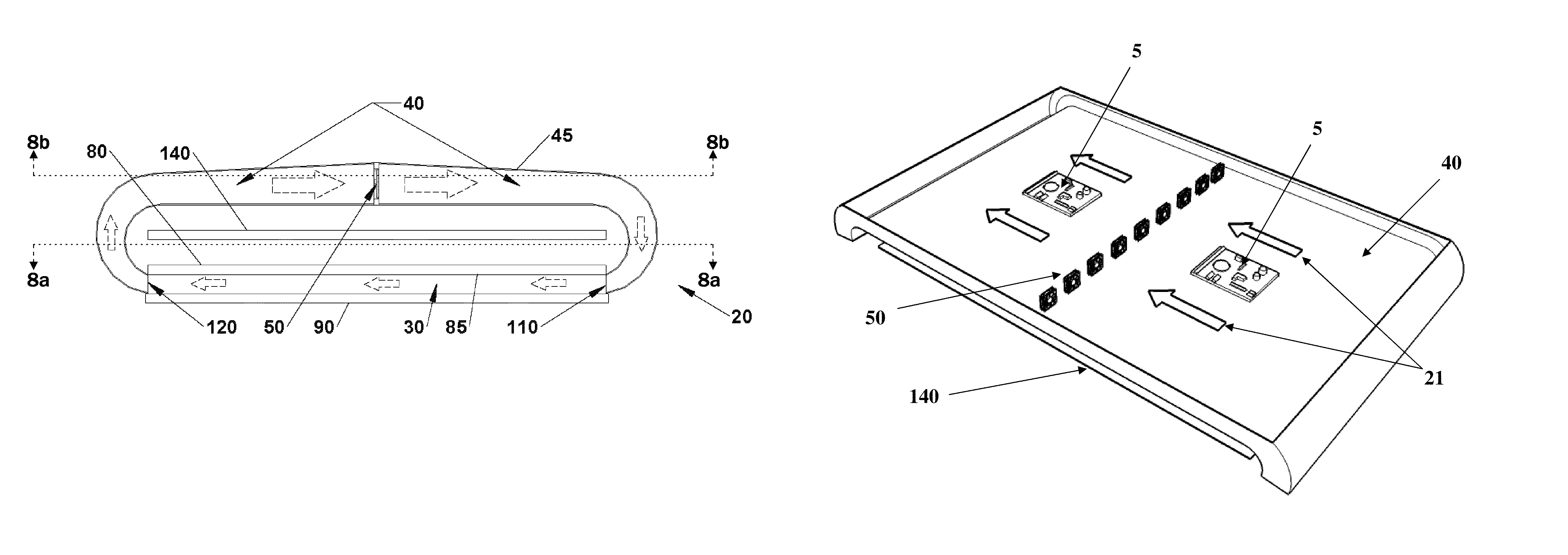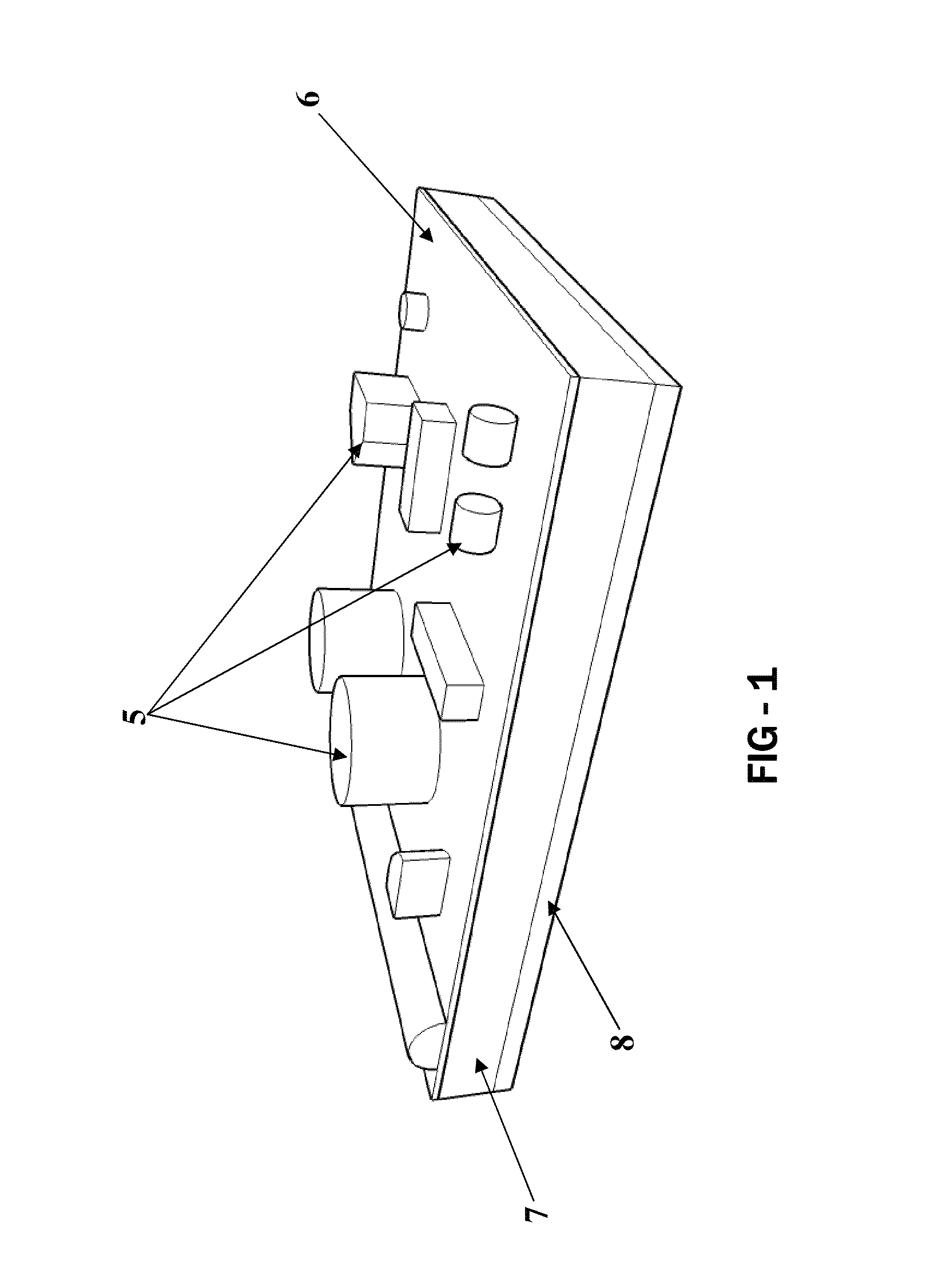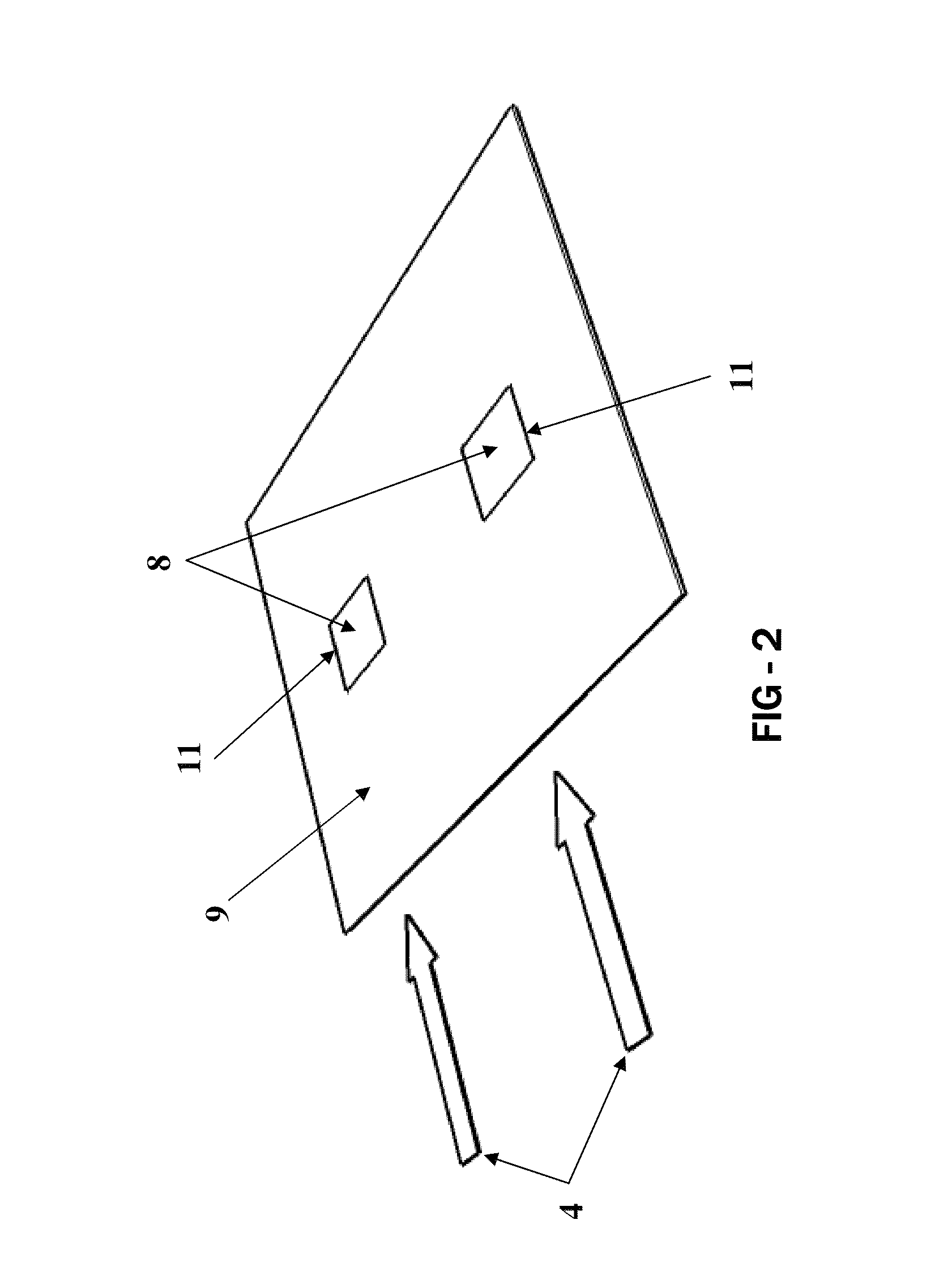System for cooling an electronic display
a technology for electronic displays and cooling systems, applied in lighting and heating apparatus, cathode-ray/electron beam tube circuit elements, instruments, etc., can solve the problems of a large amount of heat produced by illumination devices such as ccfl assemblies, leds, organic leds, etc., and become a significant source of hea
- Summary
- Abstract
- Description
- Claims
- Application Information
AI Technical Summary
Benefits of technology
Problems solved by technology
Method used
Image
Examples
Embodiment Construction
[0007]Exemplary embodiments relate to a system for cooling the following portions of an electronic display, either alone or in combination: (1) power module(s), (2) backlight, and (3) front display surface. Power modules with heat dissipating assemblies (ex. cold plates and / or heat sinks) may be used with some embodiments where the side of the power module containing the heat dissipating assembly is placed in the path of moving air while the side of the power module containing sensitive electrical components remains in a separate environment. An isolating structure may provide the necessary gaseous isolation between the two sides of the power modules.
[0008]Backlights with a front and rear sides may be used with some embodiments where the front side contains the illumination devices and the rear side contains a metallic surface for dissipating the heat from the illumination devices. Ideally, there should be a low level of thermal resistance between the front and rear sides of the bac...
PUM
| Property | Measurement | Unit |
|---|---|---|
| temperatures | aaaaa | aaaaa |
| thermally-conductive | aaaaa | aaaaa |
| Conductive | aaaaa | aaaaa |
Abstract
Description
Claims
Application Information
 Login to View More
Login to View More - R&D
- Intellectual Property
- Life Sciences
- Materials
- Tech Scout
- Unparalleled Data Quality
- Higher Quality Content
- 60% Fewer Hallucinations
Browse by: Latest US Patents, China's latest patents, Technical Efficacy Thesaurus, Application Domain, Technology Topic, Popular Technical Reports.
© 2025 PatSnap. All rights reserved.Legal|Privacy policy|Modern Slavery Act Transparency Statement|Sitemap|About US| Contact US: help@patsnap.com



